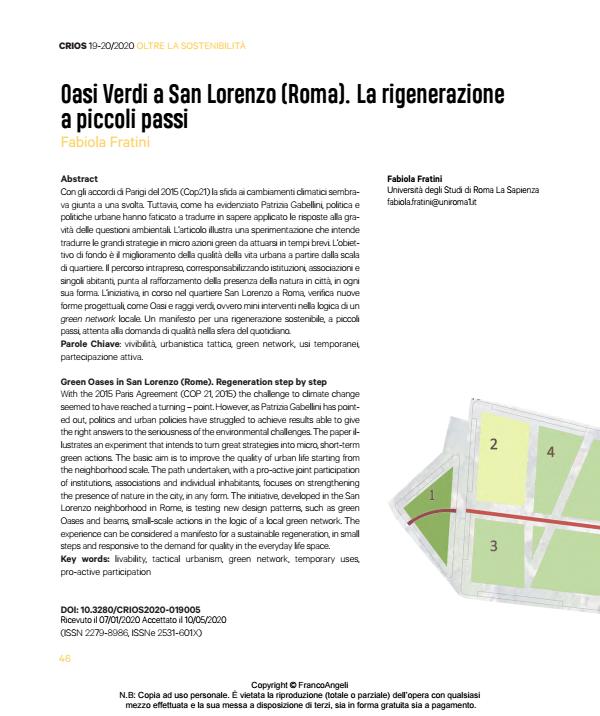Green Oases in San Lorenzo (Rome). Regeneration step by step
Journal title CRIOS
Author/s Fabiola Fratini
Publishing Year 2021 Issue 2020/19-20
Language Italian Pages 14 P. 46-59 File size 1009 KB
DOI 10.3280/CRIOS2020-019005
DOI is like a bar code for intellectual property: to have more infomation
click here
Below, you can see the article first page
If you want to buy this article in PDF format, you can do it, following the instructions to buy download credits

FrancoAngeli is member of Publishers International Linking Association, Inc (PILA), a not-for-profit association which run the CrossRef service enabling links to and from online scholarly content.
With the 2015 Paris Agreement (COP 21, 2015) the challenge to climate change seemed to have reached a turning - point. However, as Patrizia Gabellini has point-ed out, politics and urban policies have struggled to achieve results able to give the right answers to the seriousness of the environmental challenges. The paper il-lustrates an experiment that intends to turn great strategies into micro, short-term green actions. The basic aim is to improve the quality of urban life starting from the neighborhood scale. The path undertaken, with a pro-active joint participation of institutions, associations and individual inhabitants, focuses on strengthening the presence of nature in the city, in any form. The initiative, developed in the San Lorenzo neighborhood in Rome, is testing new design patterns, such as green Oases and beams, small-scale actions in the logic of a local green network. The experience can be considered a manifesto for a sustainable regeneration, in small steps and responsive to the demand for quality in the everyday life space.
Keywords: Livability, tactical urbanism, green network, temporary uses, pro-active participation
Fabiola Fratini, Oasi Verdi a San Lorenzo (Roma). La rigenerazione a piccoli passi in "CRIOS" 19-20/2020, pp 46-59, DOI: 10.3280/CRIOS2020-019005